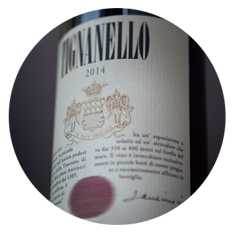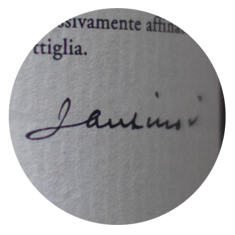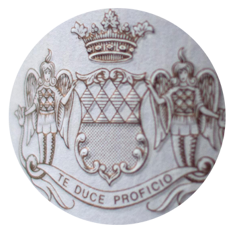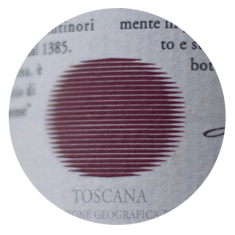Tignanello
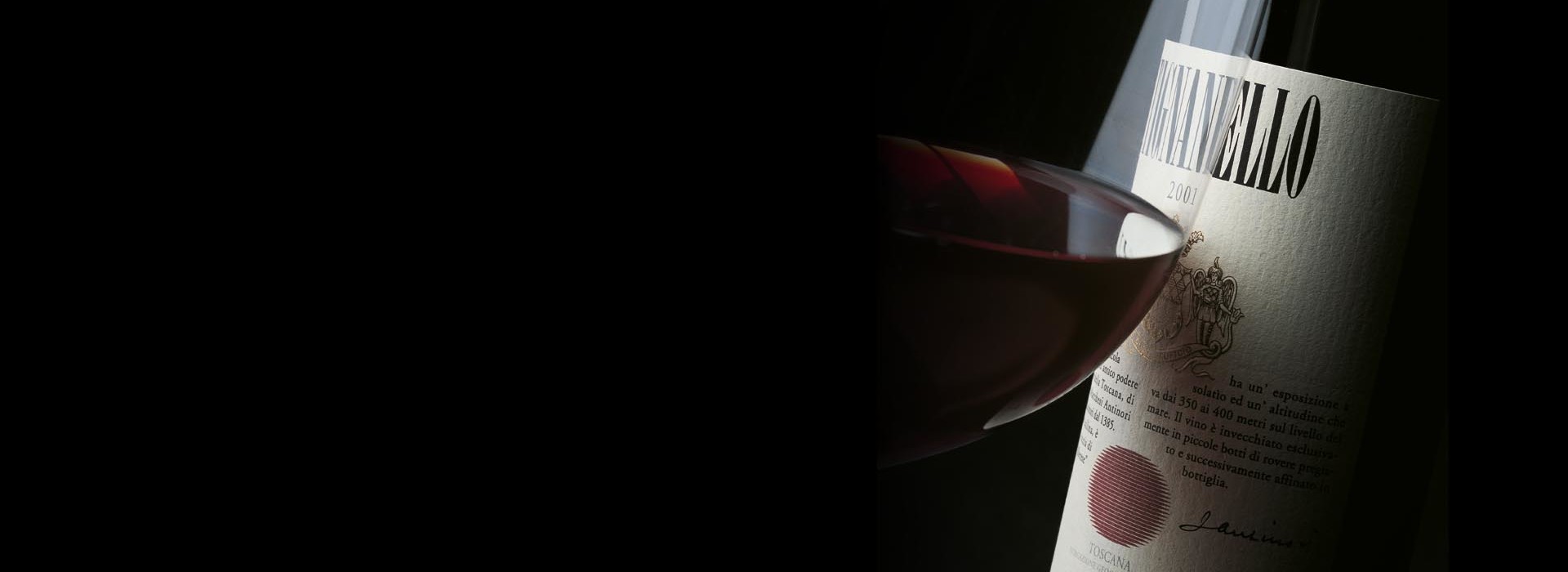
The Wine
Tignanello was the first Sangiovese to be aged in barriques, the first contemporary red wine blended with untraditional varieties (specifically Cabernet) and one of the first red wines in the Chianti Classico region that didn’t use white grapes. Tignanello is a milestone. It’s produced with a selection of Sangiovese, Cabernet Sauvignon and Cabernet Franc.
Historical Data
Tignanello is produced exclusively from the vineyard of the same name, a parcel of some 140 acres (57 hectares) with limestone-rich soils and a southwestern exposure at 1150-1325 feets (350-400 meters) above sea level at the Tignanello estate. It was the first Sangiovese wine to be aged in small oak barrels, the first modern red wine to use such non-traditional varieties as Cabernet in the blend, and among the first red wines from the Chianti Classico area to be produced without white grapes. The wine, originally called "Chianti Classico Riserva Vigneto Tignanello" (a Chianti Classico Riserva from the Tignanello vineyard), was produced for the first time from a single vineyard parcel in 1970, when the blend contained 20% of Canaiolo and 5% of Trebbiano and Malvasia, both white grapes, and the wine aged in small oak barrels. In 1971 it became a Tuscan red table wine rather than a Chianti Classico, and was called Tignanello. In the 1975 vintage the percentage of white grapes was definitively eliminated from the blend. Ever since 1982, the blend has been the one currently used. Tignanello is bottled only in favorable vintages, and was not produced in 1972, 1973,1974, 1976, 1984, 1992, and 2002.
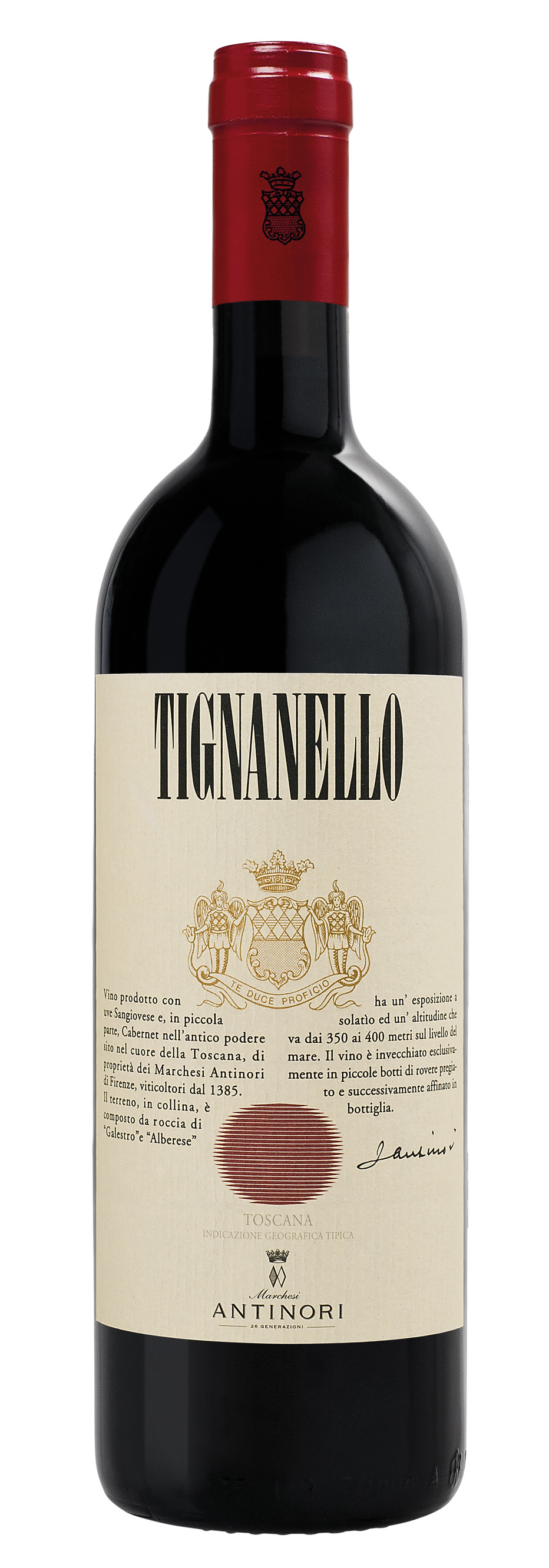
The Wine
Tignanello was the first Sangiovese to be aged in barriques, the first contemporary red wine blended with untraditional varieties (specifically Cabernet) and one of the first red wines in the Chianti Classico region that didn’t use white grapes. Tignanello is a milestone. It’s produced with a selection of Sangiovese, Cabernet Sauvignon and Cabernet Franc.

The Design
The label was designed by Silvio Coppola in 1974 for the release of Tignanello 1971. The idea to commission this artist was discussed at an event at Castello della Sala in 1973. Silvio Coppola was an important Italian graphic and interior designer who was famous for his minimalist lighting fixtures and austere furniture but also for book cover designs for Italian publishing company Feltrinelli. Silvio Coppola was the perfect match for the job.
The Signature
Marchese Piero Antinori, the current Honorary President, decided to have his father, Niccolò Antinori, sign the label as a sign of recognition for his father’s confidence in him.
Te Duce Proficio
The historic family crest of the Antinori family
The Sun
Tignanello’s stylized “Sun” by Silvio Coppola
Climate
The 2018 growing season in Chianti Classico began with normal winter weather both in terms of temperatures and rainfall. Despite these climatic conditions, the vines began bud break a week earlier than seasonal averages in this area. Spring was characterized by frequent rain showers and lower than average temperatures, especially during the month of May, while June and July were hot and dry uninterrupted by extreme heat events. Scattered rainfall in the month of August and a dry, breezy spell in September and October allowed the grapes to progress to perfect ripeness guaranteeing excellent sugar levels and polyphenolic maturity. Harvest activities began around September 20th with Sangiovese and were completed on October 12th with Cabernet.
Vinification
This growing season’s climate trends challenged us to be focused and diligent both in the vineyards during harvesting activities and when grapes were brought to the cellar where sorting operations and initial winemaking processes were essential to achieve optimal results. During fermentation in truncated conical tanks, each individual must was macerated on the skins giving particular emphasis to preserving aromas, extracting color, and encouraging desirable tannins that are supple and elegant. Racking was performed after rigorous daily sampling and tasting. Once separated from the skins, the wine was transferred into small oak barrels where malolactic fermentation took place, accentuating aromatic finesse and complexity. The wine was left to age for approximately 14 to 16 months in French and Hungarian oak barrels, in a combination of new and second-fill barrels. After this initial period of aging, the final blend was made and then completed barrel aging. Tignanello, made primarily with Sangiovese and a small percentage of Cabernet Sauvignon and Cabernet Franc, underwent an additional 12-month period of aging in the bottle before being released.
Historical Data
Tignanello is produced exclusively from the vineyard of the same name, a parcel of some 140 acres (57 hectares) with limestone-rich soils and a southwestern exposure at 1150-1325 feets (350-400 meters) above sea level at the Tignanello estate. It was the first Sangiovese wine to be aged in small oak barrels, the first modern red wine to use such non-traditional varieties as Cabernet in the blend, and among the first red wines from the Chianti Classico area to be produced without white grapes. The wine, originally called "Chianti Classico Riserva Vigneto Tignanello" (a Chianti Classico Riserva from the Tignanello vineyard), was produced for the first time from a single vineyard parcel in 1970, when the blend contained 20% of Canaiolo and 5% of Trebbiano and Malvasia, both white grapes, and the wine aged in small oak barrels. In 1971 it became a Tuscan red table wine rather than a Chianti Classico, and was called Tignanello. In the 1975 vintage the percentage of white grapes was definitively eliminated from the blend. Ever since 1982, the blend has been the one currently used. Tignanello is bottled only in favorable vintages, and was not produced in 1972, 1973,1974, 1976, 1984, 1992, and 2002.
Tasting Notes
Tignanello 2018 is a deeply intense ruby red color. On the nose, it’s remarkably complex with notes of ripe red fruit, black cherries, sour cherries that merge with sweet hints of vanilla, mint and delicate sensations of white pepper and myrtle. Its palate is rich and well-balanced: supple velvety tannins are sustained by exceptional freshness that give the wine length, elegance and persistence of flavors.
Awards
Wine Advocate 98/100 Wine Enthusiast 97/100 Vinous 97/100 James Suckling 96/100
Scheda
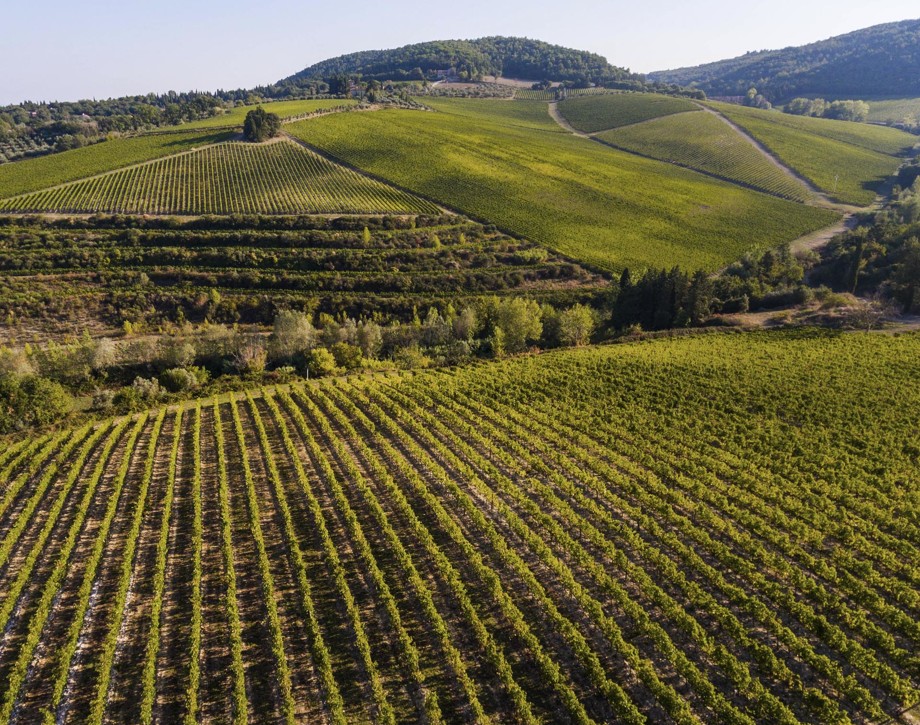
Tenuta Tignanello
The Tenuta Tignanello estate is in the heart of Chianti Classico, in the gently rolling hillsides between the Greve and Pesa river valleys. It extends over an area of 319 hectares (788 acres), of which about 130 (321 acres) are dedicated to vines. Two of the estate’s prized vineyards are on the same hillside, Tignanello and Solaia, on soils that originated from marine marlstone from the Pliocene period rich in limestone and schist. The vines enjoy hot temperatures during the day and cooler evenings throughout the growing season. The estate’s two signature wines, Solaia and Tignanello, are produced from these vineyards and have been defined by the international press as “among the most influential wines in the history of Italian viticulture”. According to Marchesi Antinori, Solaia and Tignanello are an ongoing challenge and a never-ending passion. The Tignanello estate has vineyards of indigenous Sangiovese grapes as well as some other untraditional varieties such as Cabernet Franc.
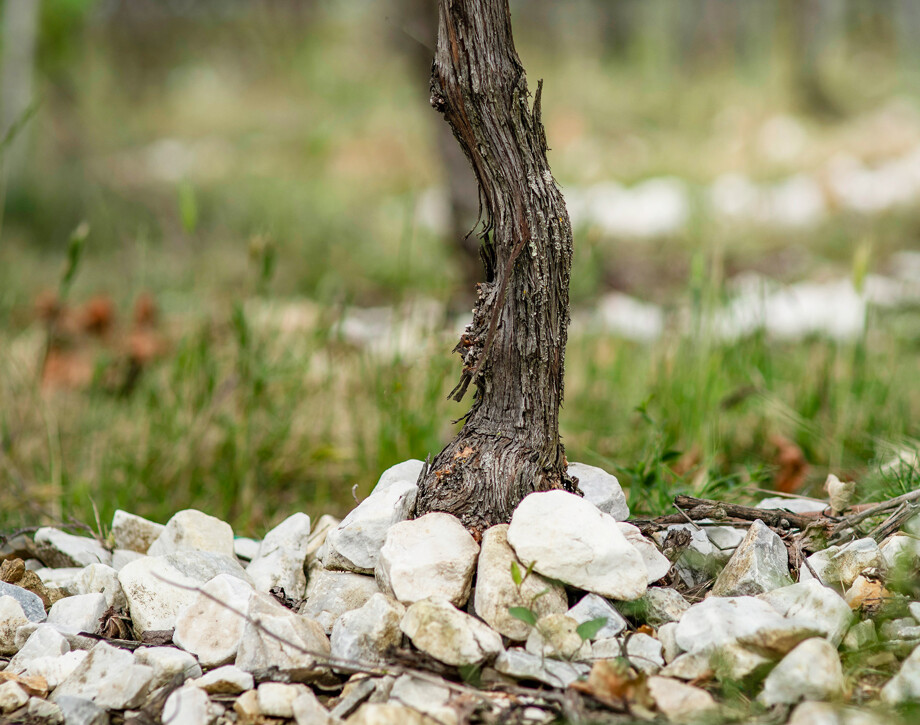
Soil
Calcareous rocky soils with alberese (marl limestone) and marl.
